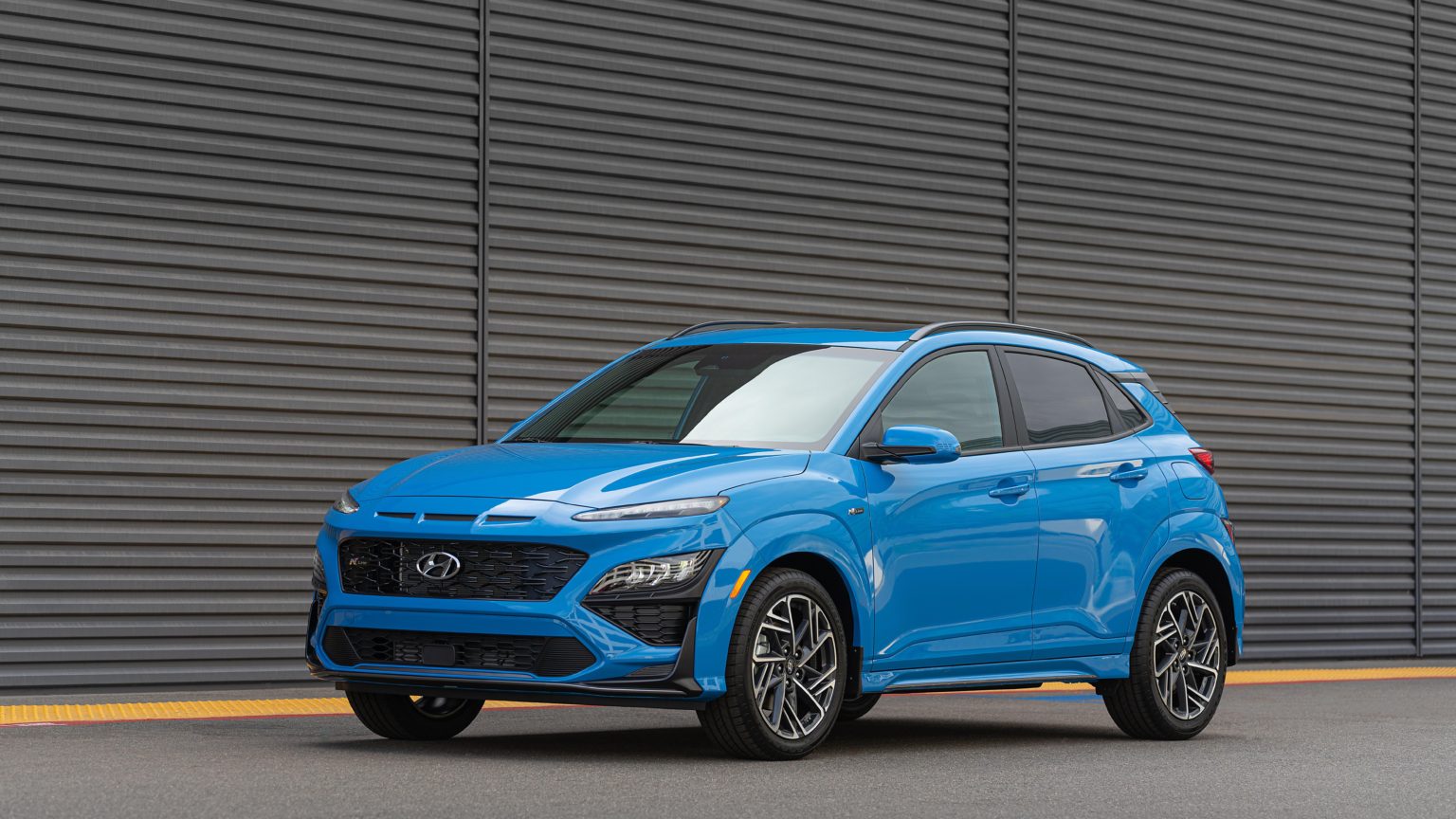Hyundai has a lot going on, with new EVs hitting the market, but the brand has been on a surprising run with performance models lately. The Veloster N is an excellent, rowdy hot hatch, and the brand followed that act with the Kona N and Elantra N. Hyundai’s Kona N takes the hot hatch formula to the next level with an incredible powertrain and useful space, but it’s too much for many people. The mid-point is Hyundai’s N Line, which borrows styling cues from the hottest N variants but lacks the all-out grunt of those vehicles.
The N Line gets aggressive styling cues from its sportier N counterpart. Hyundai
The styling works for the Kona N Line, as it does with the Kona N, but the powertrains couldn’t be more different. Where the Kona N gets a 286-horsepower four-cylinder, the N Line comes with a milder turbocharged 1.6-liter four-cylinder engine that makes 195 horsepower and 195 pound-feet of torque. It’s paired with a seven-speed dual-clutch automatic transmission, which adds a layer of engagement not found in the continuously variable transmission that standard Kona models get.
That modest output lends the Kona N Line modest performance, with more noise generated than expected. In motion, the powertrain feels decently responsive, but it lacks the razor sharp nerves of steel that the Kona N brings. Shifting into sport mode changes the gauge cluster to a bright red and hastens the vehicle’s responses, but again, it’s important to temper expectations for a milder experience here.
The digital gauge cluster responds to drive mode changes. Hyundai
Styling is more aggressive than the standard SUV, with 18-inch wheels and mean-looking exhaust tips. The Kona’s front-end design is still busy and will still be polarizing, but the dark trim and sporty aero bodywork help the situation. The N Line’s all-black interior gets red stitching and accents that help break up the otherwise monotonous color scheme. The seats are supportive and comfortable, but could be deeper for better body-holding during spirited driving sessions. There’s plenty of room up front and a surprising amount of space in back, aided by the Kona’s large-ish rear door openings. Parents will find an easy time loading kids, and older children can ride in relative luxury with plenty of legroom.
A 10.25-inch digital gauge cluster is standard, which offers configurable colors and legible information. It’s paired with a standard 8-inch touchscreen, but a 102.5-inch screen with navigation is available. Hyundai’s excellent infotainment software runs flawlessly on both units, and offers an intuitive and straightforward way to interact with the vehicle. A Harman Kardon eight-speaker stereo also comes standard.
Red accents liven what is otherwise a dark, monotone interior.Hyundai
The Kona N Line, while not as hot as the Kona N, offers a reasonable styling upgrade for people wanting a small SUV with sporty looks. Enthusiasts should look at the full-on N model for thrills, though, because the N Line should be viewed as more of an appearance package than a performance model.








